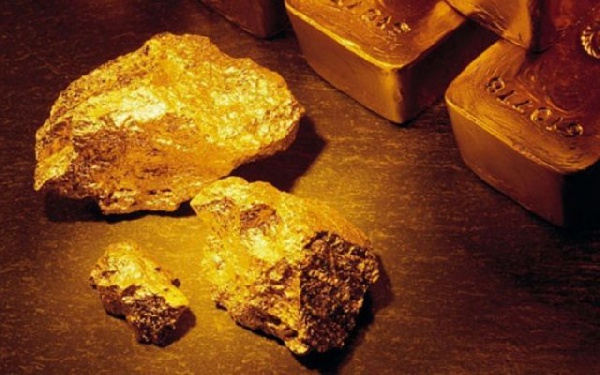- Home - News
- TWI News | TV
- Polls
- Year In Review
- News Archive
- Crime & Punishment
- Politics
- Regional
- Editorial
- Health
- Ghanaians Abroad
- Tabloid
- Africa
- Religion
- Election 2020
- Coronavirus
- News Videos | TV
- Photo Archives
- News Headlines
- Press Release
Business News of Monday, 2 September 2013
Source: B&FT
Hedged prices reduce mineral revenues

A report by the Ghana Extractive Industries Transparency Initiative (GHEITI) says government must peg mineral royalties to spot gold prices instead of hedged gold sales, since the latter causes revenue losses to the state.
The report cited Adamus Resources, a mining company, as a case study and said the firm posted consistently reduced mineral revenues from hedged prices between July to December 2011. It recommended that the Ghana Revenue Authority (GRA) review the royalty payments system by all mining companies in the country, with special emphasis on Adamus, to ensure that all royalty payments are based on the spot price.
The report also established that some significant time-lag occurs between when royalty payments are made by mining companies and the time to disbursement of a portion for recipients, including District Assemblies.
“Royalties paid from August-October 2010 were transferred in March 2011, and royalties paid in February 2011 were transferred in September 2011. Payments for November and December 2010 were rather omitted. Several companies including Ghana Bauxite Ltd., Gold Star Wassa Ltd., Golden Star Bogoso Prestea, and Ghana Manganese Ltd. made royalty payments in November 2011, but Assemblies who were due to receive the royalties were denied funds from that particularly transfer,” it said.
Meanwhile, the GRA has indicated that it has already taken notice of the anomalies in the transfer process and is working to rectify them.
The 2010/2011 mining report further revealed that royalties are sometimes transferred in tranches by some regional offices of the Office of the Administration of Stool Lands (OASL). Disbursement of mineral royalties is by done by the GRA through the OASL head office to the regional and district levels.
“Some regional offices of the OASL did not transfer the amount due to District Assemblies in full, for reasons best known to them,” the report said. The Brong Ahafo regional office, for example, received a full transfer of royalties from the OASL head office on February 15th 2010, but paid the Asutifi District Assembly in two tranches of GH¢263,394 and GH¢278,926 on March 2nd and April 1st 2010 respectively.
GHEITI called for systemic transparency and measures to curtail the challenges associated with disbursement of mining royalties to ensure the public derives the full benefit from them.
Debate has consistently been raging over whether mining communities are benefitting sufficiently from the mineral wealth on which they sit. While the companies believe they return a substantial share of their income to government through royalties, dividends and taxes, government has said this is not commensurate with the profitability of their operations.
Attempts to introduce a windfall profit tax to improve mineral revenues seem to have hit a stumbling block, with government yet to submit the requisite legislation to Parliament more than two years after expressing its intention to do so.
Miners have kicked against the additional profit tax, and have found a stronger reason to do so now with gold prices dropping by more than 15 percent in 2013.
The companies also want government to take a second look at the new policy of ring-fencing their operations, arguing it will be inimical to the interests of both the state and the industry.
In 2012, government took a decision to ring-fence mining concessions and projects to prevent companies from offsetting costs in one concession area or project against revenues from another.
But mining firms, most of which are multinationals with mines and projects across the world, say it will “aggravate the difficulty of attracting equity capital”, and implementing it will be inconsistent with the industry’s business model.










